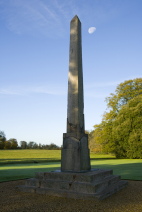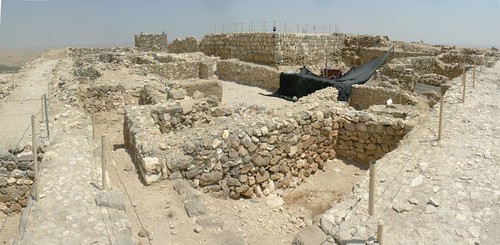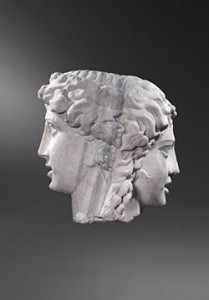JEFFREY BLAKELY
REFLECTIONS ON THE CHANGING INTERPRETATIONS OF TELL EL-HESI AND ITS ENVIRONS: 1838-2015
Early 19th century explorers of south-western Palestine saw numerous khirbets of the Roman and Byzantine periods and concluded that the environs of Wadi el-Hesi in particular had been a productive agrarian region for millennia, with towns, villages, and hamlets dotting the landscape. The coming of Islam, however, was seen as the event that ended sedentary life for the region and soon initiated a millennium of a semi-nomadic lifestyle that was still practiced as they explored the region. With this perspective these 19th century scholars sought biblical sites in what they saw as an agricultural region, focusing on the city Lachish, a site first identified as Umm Lakis and later as Tell el-Hesi. By the mid-20th century Lachish was known to be located east of this region and Tell el-Hesi was thought to be a biblical town, Eglon, but soon even that identification was called in to question. By the start of the 21st century not a single site in the Hesi region could be identified as a specific biblical town or village and many scholars questioned whether the region was even within the borders of Judah. This was a significant shift in scholarly interpretation from a century earlier. The agricultural nature of the region, however, remained unquestioned. A recent reconsideration of the Hesi region’s archaeological record suggests that for all periods post-dating the Early Bronze Age, excepting the Roman and Byzantine periods, the region supported nomads or semi-nomads who generally herded sheep and goats. It was not farmland tilled by sedentary villagers as earlier scholars thought. For the 10th, 9th, and early 8th centuries B.C.E., in particular, the Hesi region was a pasturage controlled by governmental installations at Tell el-Hesi and Khirbet Summeily. The identity of the political entity, or entities, controlling Tell el-Hesi and Khirbet Summeily is far less clear, but one entity certainly could have been Judah.
Jeffrey A. Blakely attended Oberlin College, Wilfrid Laurier University and the University of Pennsylvania, where he wrote a Ph.D. in Oriental Studies with a concentration in the archaeology of the Levant. He has participated in the renewed excavations at Tell el-Hesi since 1971, now serving as co-director. He has also excavated at Caesarea Maritima in Israel, Aqaba in Jordan, Wadi al-Jubah in Yemen, and in numerous archaeological projects in the United States. He lives in Madison, Wisconsin, and teaches at the University of Wisconsin.
PROFESSOR ALAN BOWMAN
DECODING THE PAST: ANCIENT DOCUMENTS AND MODERN TECHNOLOGY

In the last two decades modern technology has played a vital role in helping ancient historians and documentary specialists unlock the secrets of the past. Building on pioneering innovations in visualization, image-capture and signal-processing, experts in Information Technology, Medical Imaging and Palaeography have been able to develop techniques of reading ancient documents which have remained undeciphered or misread for many decades. Professor Bowman’s lecture described how these advances have been achieved, with illustrative examples of stone inscriptions from Egypt and Roman writing-tablets from Vindolanda and other parts of the empire.
Professor Alan Bowman was Principal of Brasenose College, Oxford from 2010-2015. He was previously Student (tutorial fellow) at Christ Church, Oxford and Camden Professor of Ancient History and Fellow of Brasenose College. He was President of the Society for the Promotion of Roman Studies from 2000-2004 and is currently Director of the Centre for the Study of Ancient Documents, University of Oxford and Vice-President (Humanities) of the British Academy. His research has focused on the social and economic history of Egypt from Alexander the Great to the Arab Conquest, on the Greek papyri and inscriptions from Egypt and the Middle East, the economy of the Mediterranean world under Roman rule, the Vindolanda Writing-Tablets and the application of technology to the study of Ancient Documents. Current research projects include The Oxford Roman Economy Project and the Corpus of Ptolemaic Inscriptions. He is the author of Egypt after the Pharaohs (British Museum Press, 2nd ed. 1996) and Life and Letters on the Roman Frontier: Vindolanda and its People (British Museum Press, revised edition 2003).
DR RUPERT CHAPMAN
The Richard Barnett Annual Memorial Lecture
AHAB’S IVORY HOUSE: WHEN WAS IT DESTROYED?

During the Joint Excavations at Samaria from 1932 to 1935 one of the most exciting discoveries was a large group of Phoenician carved ivory inlays. The inlays, which were found dumped and partially burnt, were datable on stylistic grounds to the Iron Age II period by comparison with well-known finds from the Assyrian palaces at Nimrud, and they were immediately connected by the excavators to the ‘ivory house’ which Ahab is said to have built (1 Kings 22:39). A small volume with illustrations of some of the best inlays first discovered was rushed out to assist in raising further funds for the work, but the discovery has left two abiding mysteries. It was assumed by the excavators that the palace was destroyed, and the ivories burnt, during the Assyrian conquest of Samaria in 721 B.C.E., and in her final report Kathleen Kenyon identified what she believed was an Assyrian destruction level at the end of her Period V. However, in his brilliant re-analysis of her work, based on the original field records, Ron Tappy found nothing at all to indicate that this identification was correct; indeed, he found no evidence of an Assyrian destruction of Samaria – a conclusion which conforms to the views of J.W. Crowfoot. Tappy found that the heaps of burnt ivory came from various contexts, and that most of them were part of the debris from the remodelling of the hilltop during the wholesale reconstruction of the site during the Hellenistic period. This lecture discussed the implication of these discoveries for the reconstruction of Ahab’s ‘ivory house’ and the date of its destruction.
Rupert Chapman was born in Oxford, Mississippi, and studied at the University of Mississippi and at the Institute of Archaeology, University of London (now the Institute of Archaeology, University College London). He was Executive Secretary of the Palestine Exploration Fund from January 1984 to June 2006 and now works in the British Museum, where he is currently Curator of Levantine Antiquities and Middle East Department Librarian. Dr Chapman has participated in excavations in Mississippi, England and Wales, Israel (in Tel Arad, under the direction of the late Prof. Ruth Amiran), Jordan, Syria, Iraq and Oman. His first published article was in the Bulletin of the Anglo-Israel Archaeological Society, on ‘Tomb P19 at Jericho: Executions or Atrocities’. He has been deeply interested in the archaeology of Samaria for many years because of the importance of the site for the dating of the Iron Age archaeology of Israel, which is one of the most interesting problems in Levantine archaeology today.
DR PAUL COLLINS
THE IMAGE OF GOD IN THE ART OF ANCIENT ASSYRIA

©Trustees of the British Museum
Assyria emerged as a significant state in northern Mesopotamia and Syria in the 14th century BC. From 850 BC it expanded into an empire reaching from the Levant to Iran. Throughout its history Assyrian imagery, most famously as sculpted relief panels from royal palaces, focused on the military achievements of the king as well as on his relations with the gods. The monumental sculptures together with small-scale portable objects – especially cylinder and stamp seal – provide a very rich, diverse set of data. Early scenes depict religious or mythical themes within apotropaic compositions, while later images reflect the increasingly god-like nature of Assyrian kings. With the expansion of the empire from the mid eighth century BC onwards, a permanent Assyrian presence was established beyond the heartland. A mixed population and a new multi-ethnic ruling class emerged which shared an “Assyrian” identity and an associated material culture. The relationship between the king and his gods forged an Assyrian world-view. This talk examined in particular images of the gods.
Dr Paul Collins is Jaleh Hearn Curator of Ancient Near East in the Department of Antiquities at the Ashmolean Museum, University of Oxford. He received his PhD from University College London and has worked as a curator in the Middle East Department of the British Museum and the Ancient Near Eastern Art Department of the Metropolitan Museum of Art. His publications include Assyrian Palace Sculptures (2008), From Egypt to Babylon: The International Age (2008), and, with Liam McNamara, Discovering Tutankhamun (2014).
DR CARLY CROUCH
HAVE POTS, WILL TRAVEL: ISRAELITE IDENTITY IN THE SEVENTH CENTURY BCE FROM AN ARCHAEOLOGICAL PERSPECTIVE

Discussions of Israelite identity have mostly focused on the emergence of Israel sometime between the twelve and tenth centuries BCE and on the effects of the Babylonian exile in the sixth century. This lecture drew attention to the neglected period between these two extremes, focussing especially on the seventh century, when Assyrian imperialism in the southern Levant was at its height. We surveyed a wide range of sites in the Negev, Shephelah and hill country of Judah, and observed the archaeological evidence for a wide diversity in the material culture remains of this period which suggests that the inhabitants of Judah would have been exposed to alternative cultural practices during this period in a way in which they had not been before. The lecture investigated the possible effects of exposure to such diversity on the population of Judah and on their sense of their ethnic identity.
Carly Crouch is Lecturer in Hebrew Bible at the University of Nottingham. Her research focuses on the social and intellectual history of the ancient world, with particular attention to ethics and to the histories of ancient Israel and Judah. She has written on mythology, ideology and violence (War and Ethics in the Ancient Near East, 2009); on the effect of economic, political and social change on Israelite ethnic identity during the Assyrian period (The Making of Israel, 2014); and on the relationship between the book of Deuteronomy and Assyrian imperial power (Israel and the Assyrians, 2014).
ESTEE DVORJETSKI
‘ADVERTISING’ MEDICINE AND PUBLIC HEALTH IN ROMAN PALESTINE

Many different methods are currently used for drawing attention to medicine and public health. In contrast, in antiquity such advertising was achieved by urban coinage which reflected political, cultic, commercial, and medical propaganda featuring symbols, such as a single snake or a pair of snakes which served as the attributes of gods. The coins of Akko-Ptolemais, Shechem-Neapolis, Jerusalem-Aelia Capitolina, Tiberias, Caesarea-Maritima and Gadara represented symbolically local healing waters or curative thermo-mineral springs as a means of spreading their reputation and boosting the economies of these Roman cities.
Professor Estēe Dvorjetski’s research ranges widely over the eastern Mediterranean basin from the biblical era to the early Moslem period, focusing on historical, medicinal, and archaeological aspects, and she has recently been a scientific consultant to an exhibition on The History of Jerusalem in Light of Medicine and Faith at the Tower of David Museum. Professor Dvorjetski has published numerous papers on the history of medicine, leisure-time activities, thermo-mineral baths, numismatics, ecology, historical geography, and Talmudic literature. Her last book, entitled Leisure, Pleasure and Healing: Spa Culture and Medicine in the Ancient Eastern Mediterranean (Brill, 2007), focuses on daily life, healing cults, medical recommendations and treatments.
Professor Dvorjetski is currently working on her new book entitled, Medicine, Ecology and Public Health in the Holy Land from Biblical Times to the End of the Roman Empire.
DR. MARK MERRONY
ARCHAEOLOGISTS, COLLECTORS, AND MUSEUMS: REDRESSING THE ETHICAL DIVIDE IN THE FACE OF MODERN CONFLICT

Informed by his diverse career in archaeological publishing, the museum world, and the commercial sphere of ancient art, Dr Mark Merrony examined the ethical issues that polarize archaeologists in their relations with public and private collectors, and he examined legislation in the face of modern conflict in the Middle East and of the possibilities of future reconciliation.
Dr Merrony is director of Ariadne Galleries, London and New York, editor in chief of Minerva Magazine, and a Supernumerary Fellow of Wolfson College, Oxford. He published Socio-economic Aspects of Late Roman Mosaics in Phoenicia and Northern Palestine (Archaeopress, Oxford) in 2013. A book entitled The Death of Rome, about the fall of the West Roman Empire, is to appear next year, to coincide with the 240th anniversary of Edward Gibbon’s History of the Decline and Fall of the Roman Empire.
DR ADI KEINAN-SCHOONBAERT
ARCHAEOLOGY IN THE WEST BANK: A VIEW ON ISRAELI AND PALESTINIAN DOCUMENTATION
The central hill country of the Holy Land, encompassed by the modern political boundaries of the West Bank and East Jerusalem, has long attracted the interest and curiosity of archaeologists and scholars. Since 1967 the areas occupied by Israel have been subject to intensive archaeological survey, salvage excavations and research projects conducted mainly by Israeli government and academic institutions. Since the establishment of the Palestinian National Authority in 1994, Palestinian institutions have also become engaged in a variety of archaeological projects, surveys and excavations. This lecture examines the results of Israeli and Palestinian data collection, mostly focusing on the West Bank and East Jerusalem Archaeological Database (WBEJAD) – a database covering thousands of archaeological sites surveyed or excavated by Israel from 1967 to 2007. By examining recording emphasis in West Bank inventories, this lecture interrogated the ways in which social, political, ideological or cultural values may affect different aspects of data collection and management.
Dr Adi Keinan-Schoonbaert is a research associate at the Institute of Archaeology, University College London, where she completed her PhD in 2013. Her doctoral research explored data trends and variability in Israeli and Palestinian archaeological inventories in the occupied West Bank. She is currently a team member on an AHRC-funded project called Crowd- and Community-fuelled Archaeological Research (MicroPasts), which examines participatory methods of citizen science such as crowd-sourcing, in collaboration with the British Museum. Her main interests are cultural heritage documentation, archaeological databases, Geographic Information Systems, digital heritage, computer applications in archaeology, and 3D modelling.
DR KATHRYN E. PIQUETTE
REVEALING ‘INVISIBLE’ GREEK MAGICAL TEXTS FROM THE LEVANT

Dr Piquette presented the results of new digital imaging techniques on the study of Greek magical texts from the Levant dating from the first to fifth centuries CE. These texts, which range from protective or binding spells to curses that target both humans and animals, are inscribed on thin sheets of lead recovered from sites such as Beth Guvrin, Beth Shemesh, Caesarea, Jerash and Jerusalem. They are very difficult to read, but thanks to the power of new digital imaging methods, it is now possible to make these hidden texts visible once more.
Dr Piquette described the image capture method and illustrate the insights which Reflectance Transformation Imaging (RTI) provides into this fascinating corpus of material. Two newly studied tablets show the tantalising insights into private life more than 1700 years ago.
Dr. Kathryn E. Piquette is a Research Associate at the Cologne Centre for eHumanities (CCeH), Universität zu Köln, where she is currently engaged both in the Magica Levantina project and in infrared imaging of the carbonised papyri from Herculaneum.

